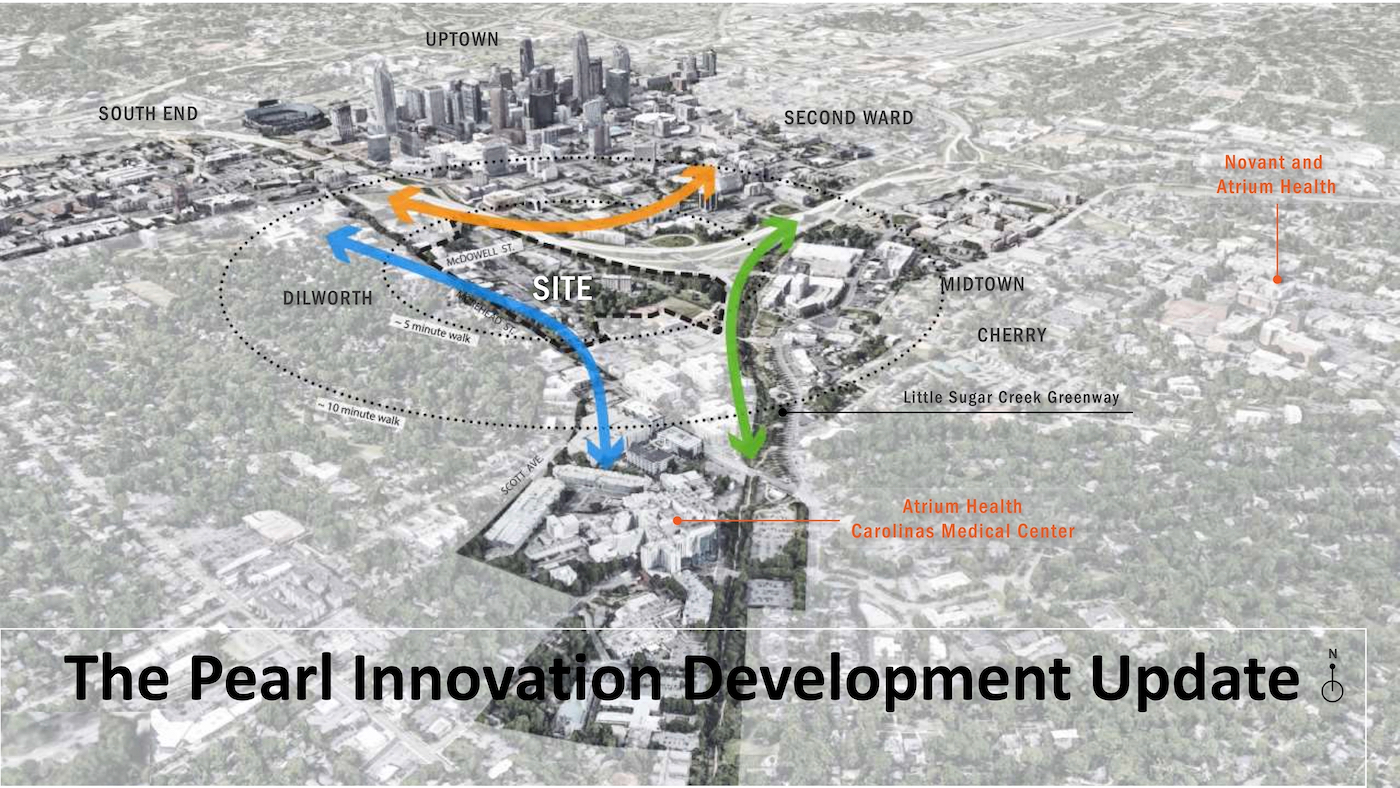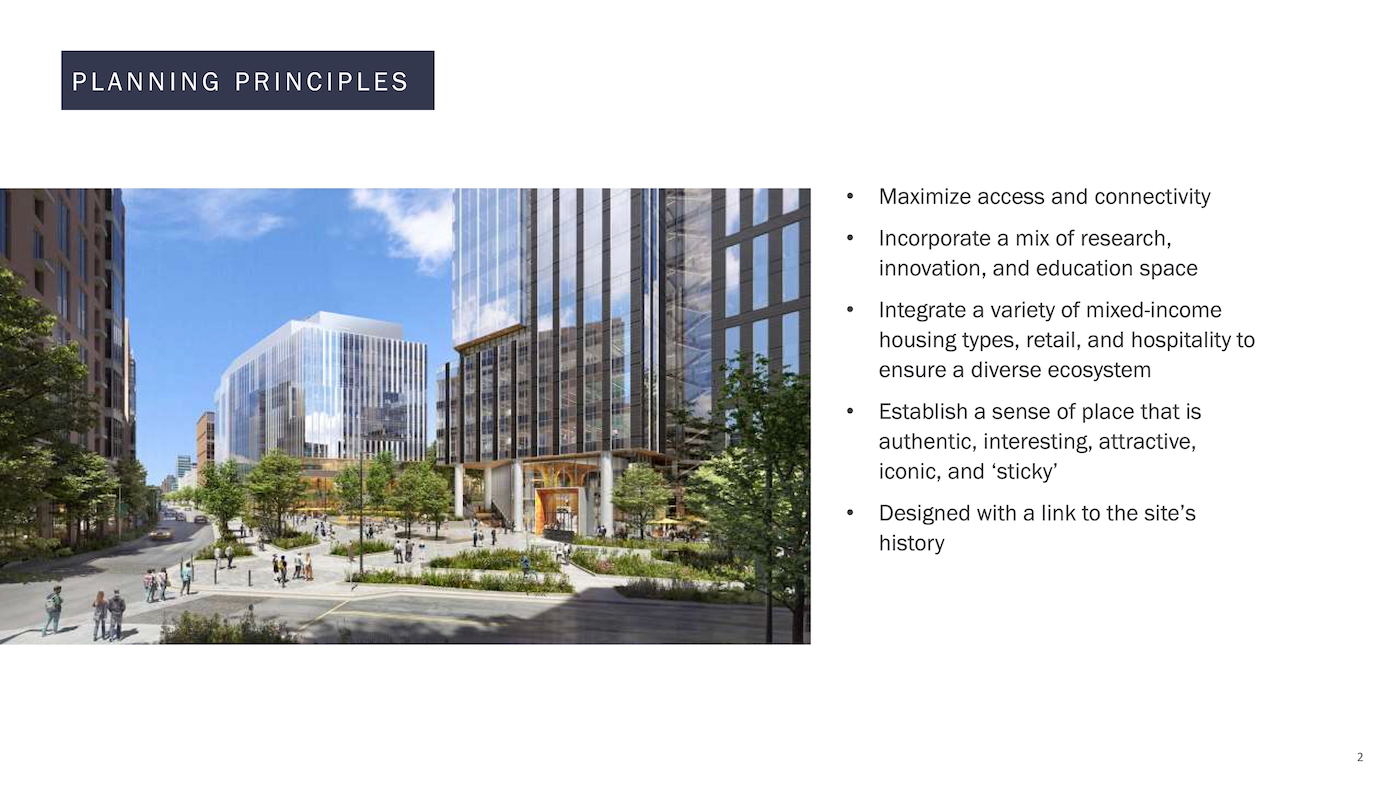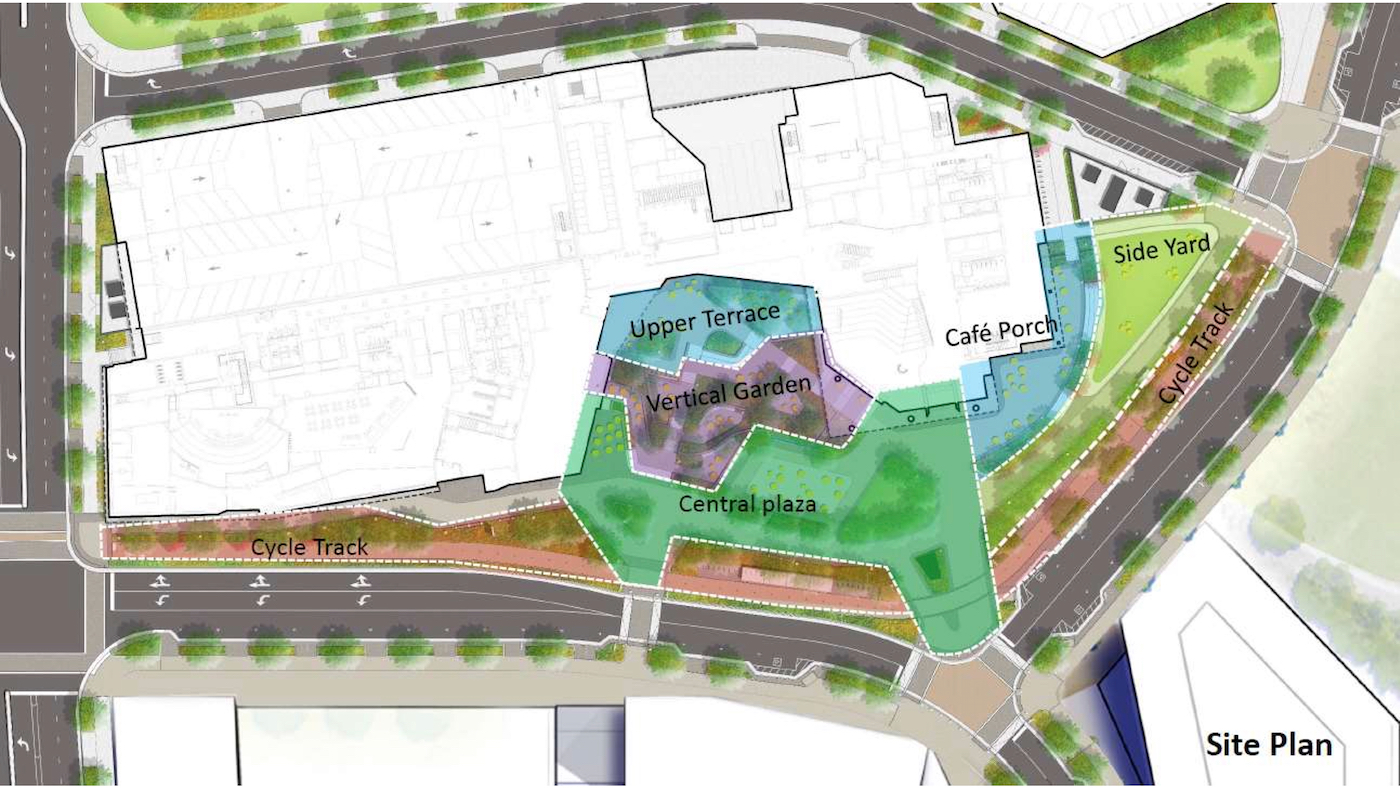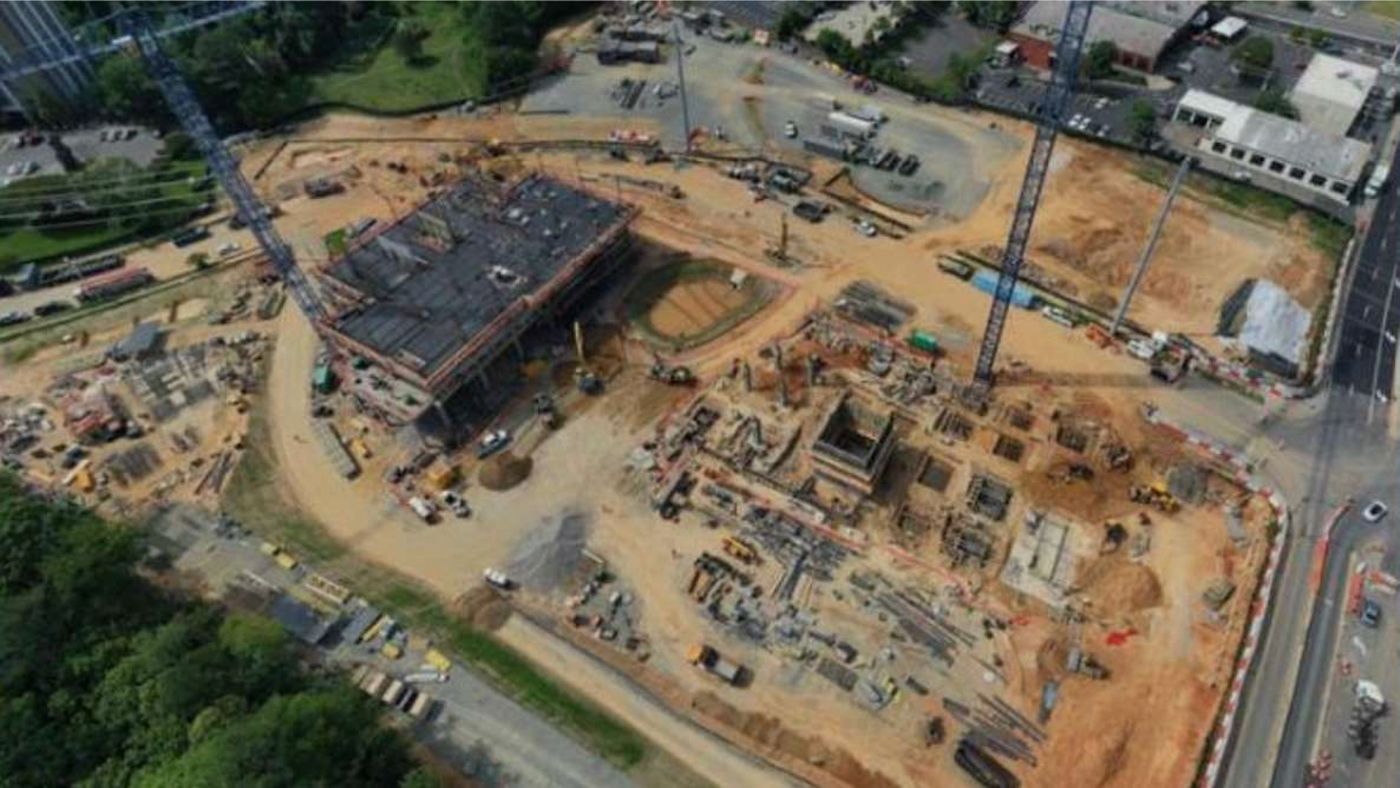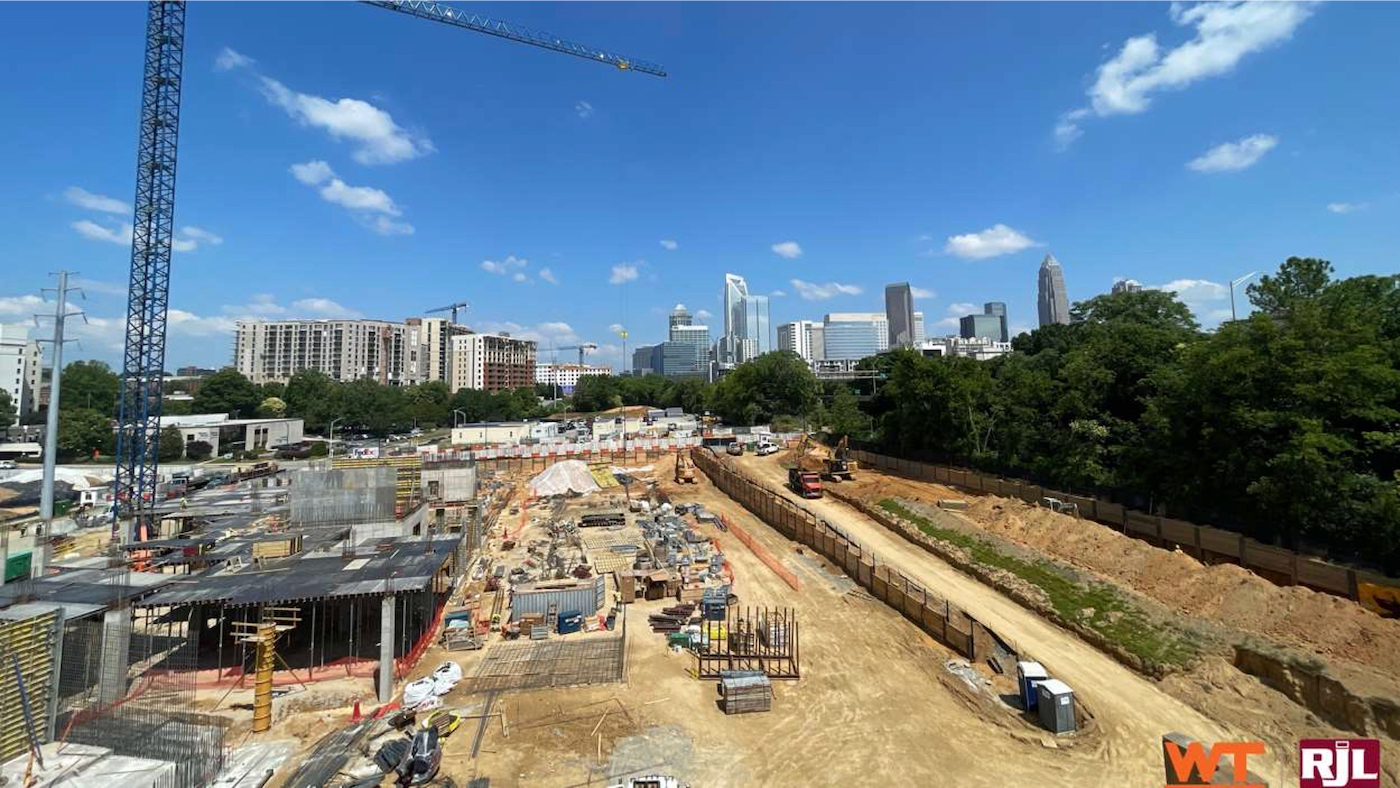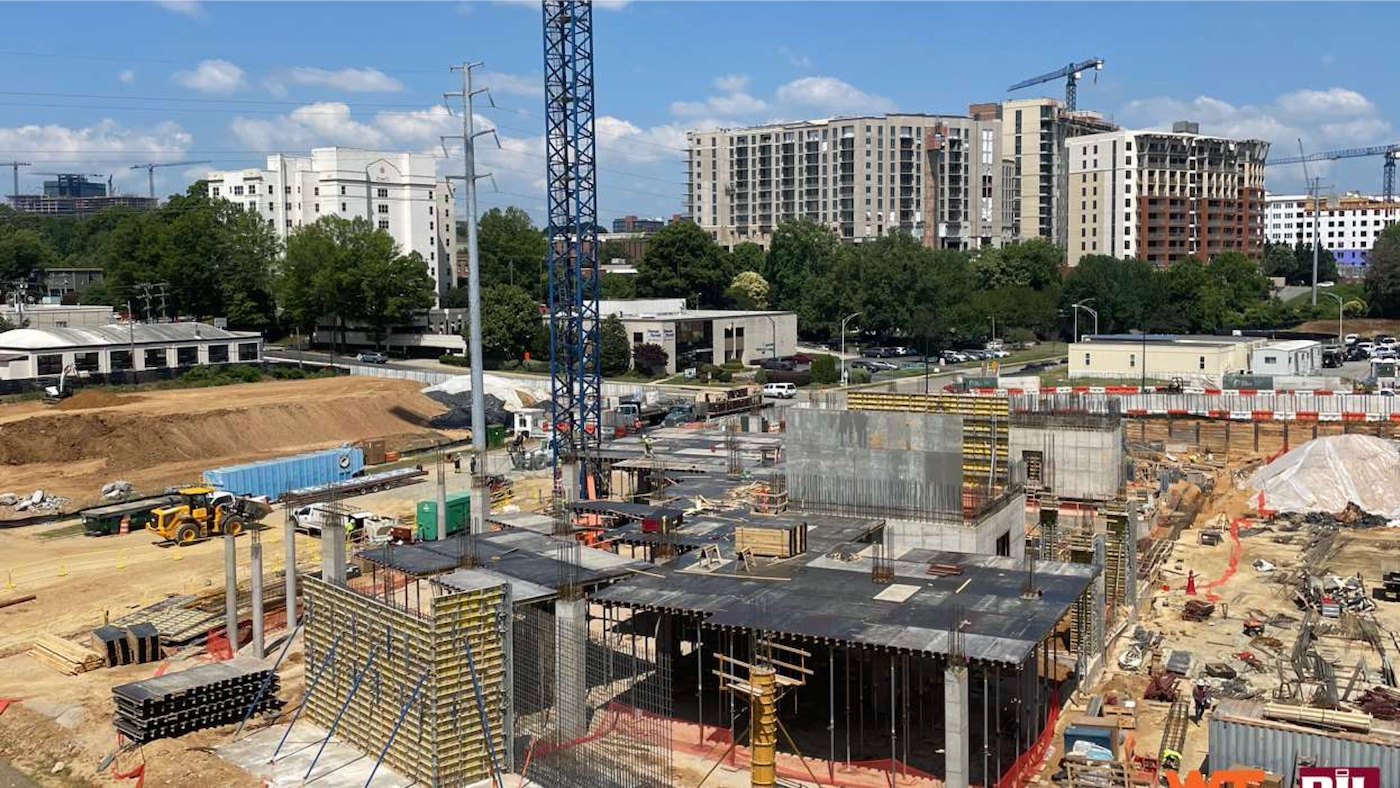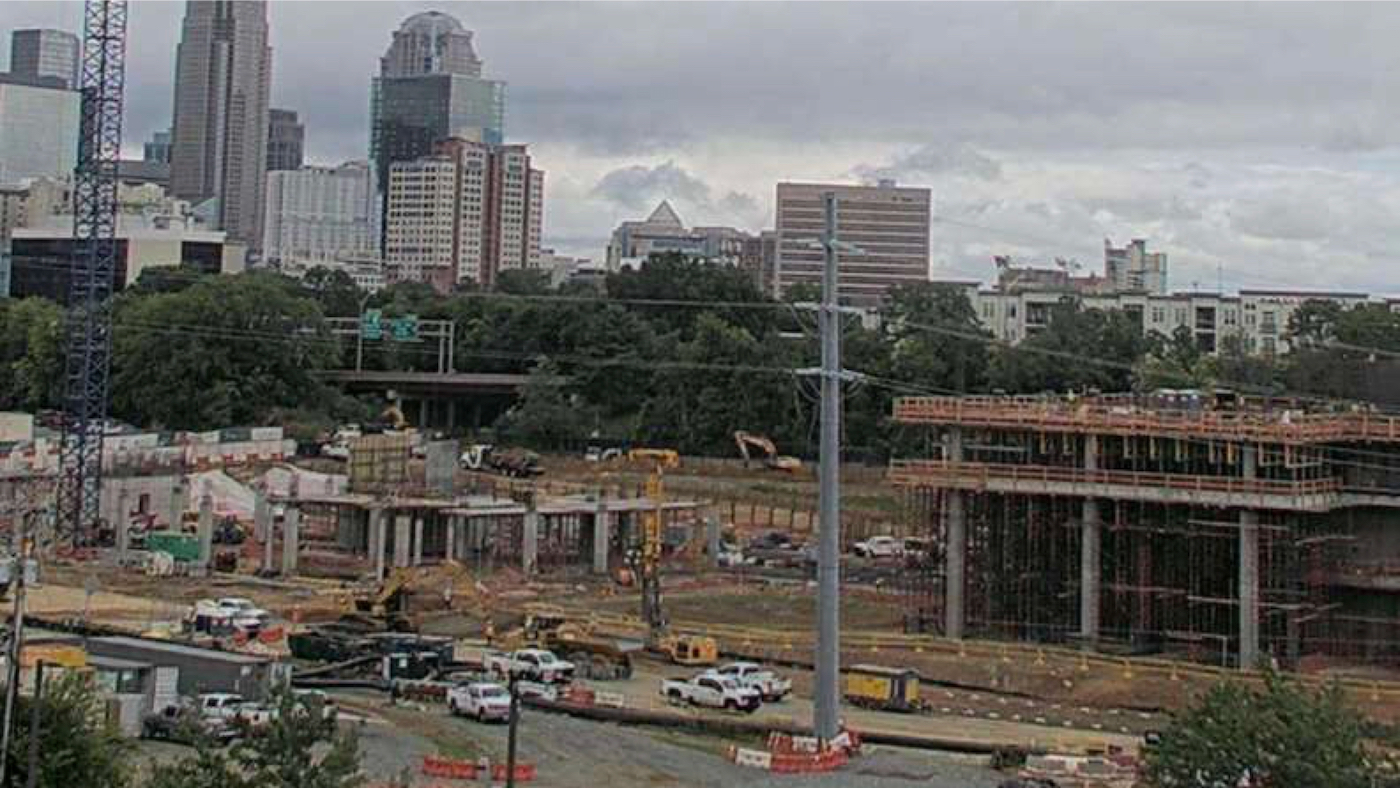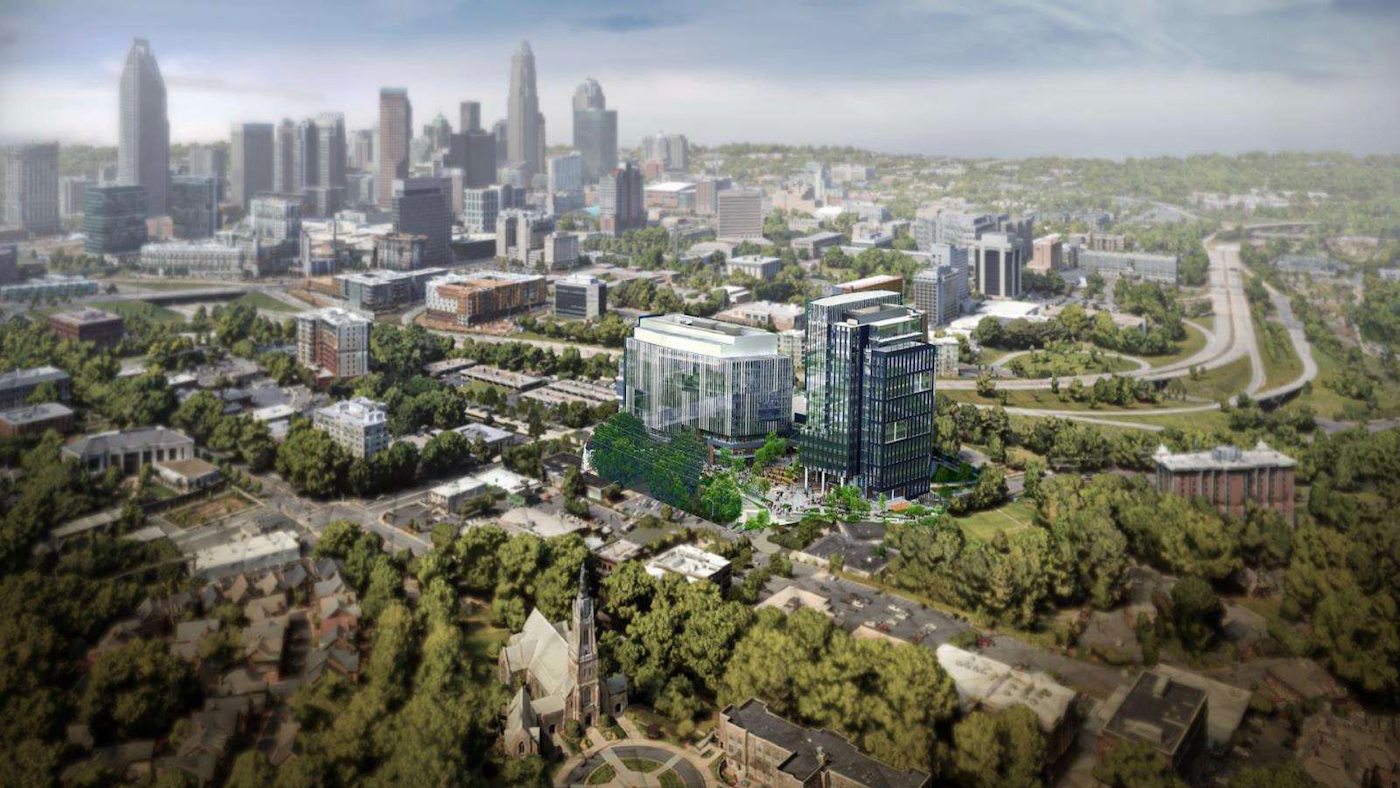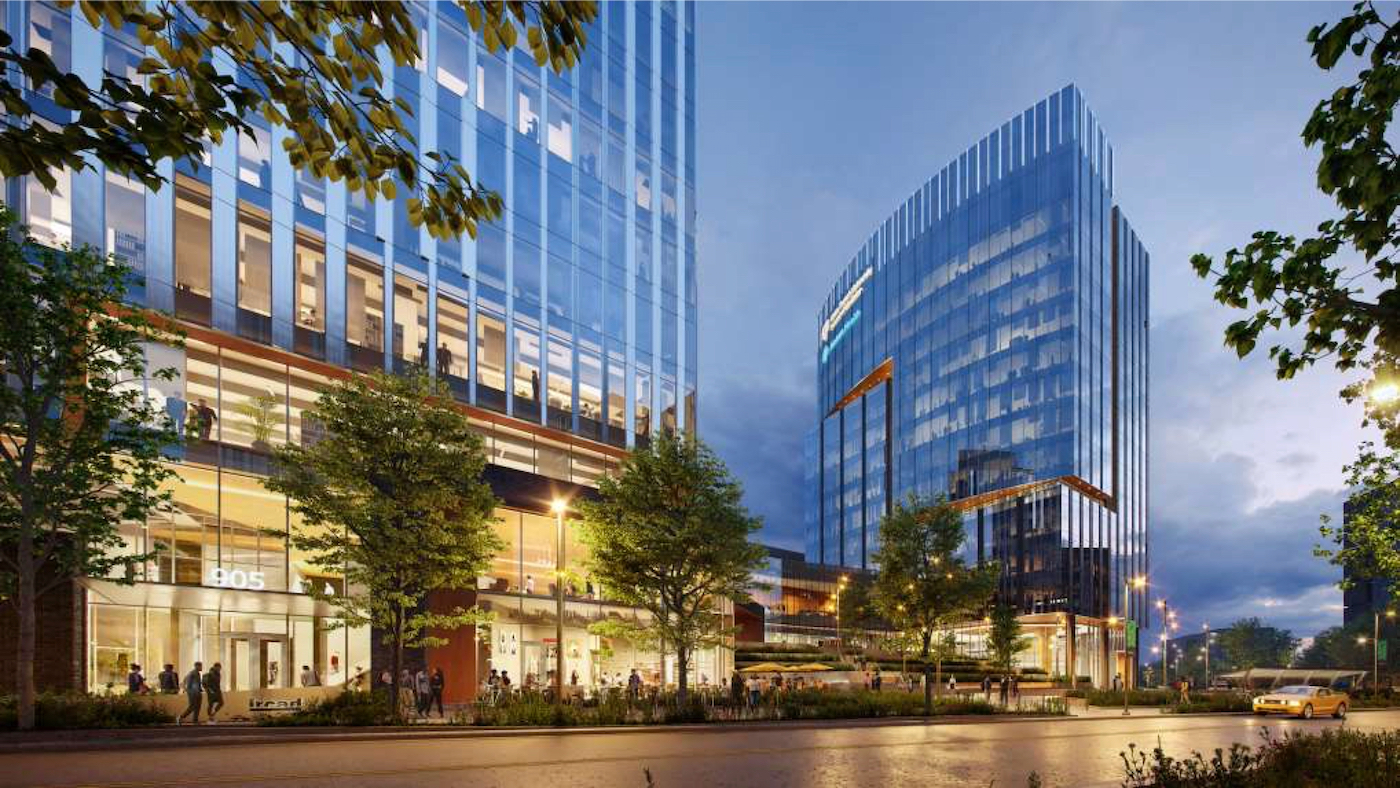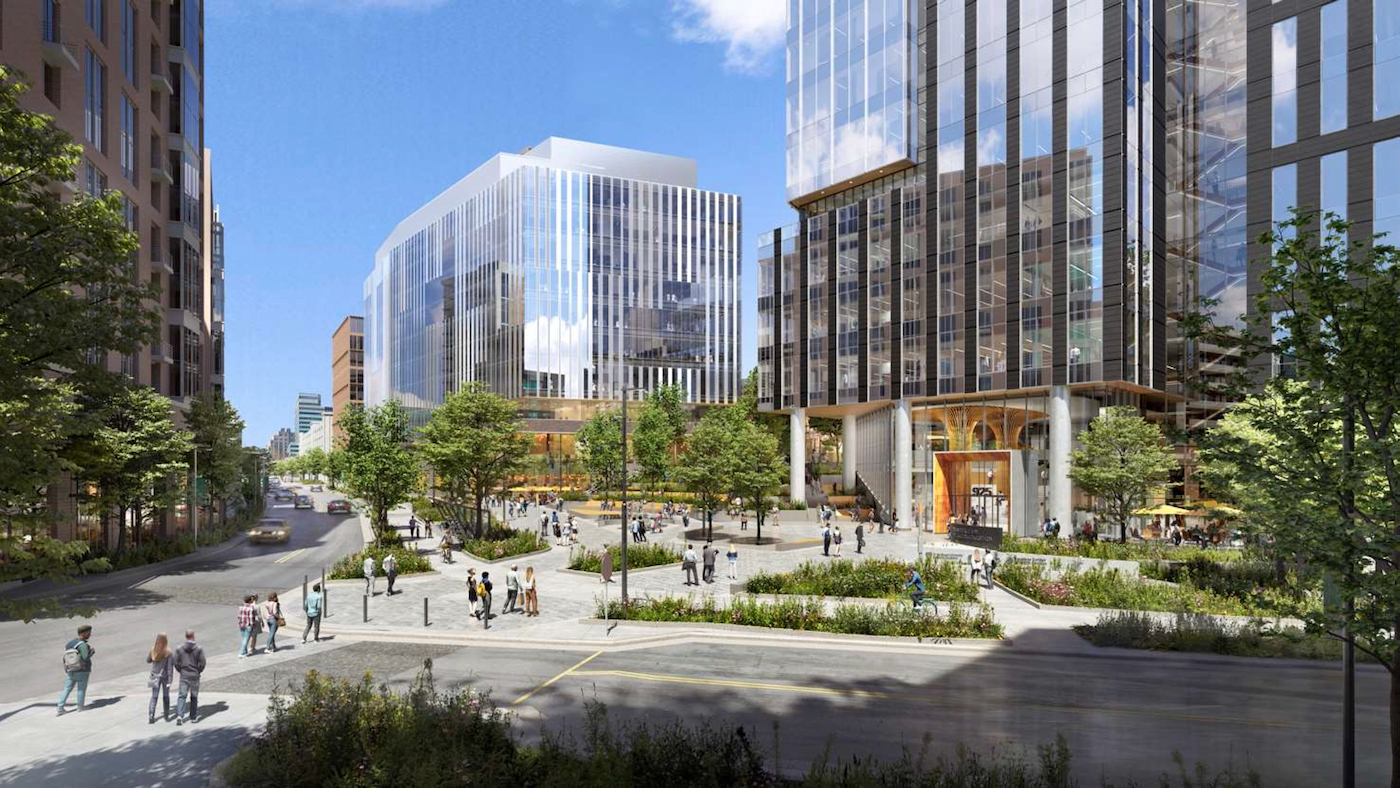
June 6, 2023
Two representatives of the developer preparing the Charlotte site for the Atrium/Wake Forest medical school this morning gave an update on construction and planning for the site.
The last presentation was Aug. 24, 2021.
Dennis Miller, who spoke for Wexford in 2021, focused his presentation on visuals of construction under way near I-277 that will create space for the medical school to open in fall 2025, and the first of the research facilities planned on the site roughly bounded by McDowell, I-277, the adjoining Metropolitan commercial development and Morehead Street. Later phases have envisioned residential housing, more office/research buildings, a hotel and some open space.
The presentation drew to the Forum a number of Charlotte residents who once resided in the Brooklyn neighborhood bulldozed by 1960s urban renewal, or went to all-Black Second Ward High School before it too was bulldozed, or who shopped or worshiped in the area. Some of the attendees had participated with the Wexford staff members at earlier community meetings, and they had very specific questions about how Wexford will involve the residents and their descendants who were forced from the land, sometimes with little or no compensation.
Flash points involved MWBE goals for construction jobs; the percentage of housing built later that will be affordable; how many residents will be involved in a community advisory council; and a January groundbreaking promoted by Atrium Health where, according to residents, 95% of the invited guests were white.
Travis Sheridan, Wexford’s senior vice president and chief community officer, denied that persons named by community groups on the Pearl advisory council would have to be vetted before serving. Sheridan did not explain how he thought the rumor got started. He said the council would begin meeting this fall.
Former Brooklyn resident Jacqueline Stowe asked if in addition to reaching out to local K-12 public schools the developers would involve the descendants of Brooklyn residents who are now at historically Black colleges and universities in North Carolina. “I like this idea of reaching out to the descendents of Brooklyn residents,” Sheridan said. As research facilities within the “innovation district” are leased, job opportunities will be better defined, he said.
When U.S. 74 was rammed through Brooklyn in the 1950s, the lower portion of the community was sliced off. Later, I-277 was built on much of the old boulevard footprint. The portion now becoming the innovation district was known to many residents as Blue Heaven. The Charlotte City Council at that time faced appeals to set aside lower Brooklyn for a signature park like New York City’s Central Park. Council instead used about 5 acres for senior public housing, and sold other portions for construction of one-story commercial buildings that would produce property tax income for the city. Atrium in recent years acquired some or all of those commercial buildings, and the mostly 1970s buildings have been razed to make way for the medical school and research buildings outlined in the video below.
A reporter in Tuesday’s audience asked if Wexford would share its presentation slides. Miller,who is Wexford’s senior vice president and market executive, said some of the slides would be captured on the video below. Wednesday morning, Miller provided the slides. They are available here as a PDF download here. The individuals slides are posted below the video.
